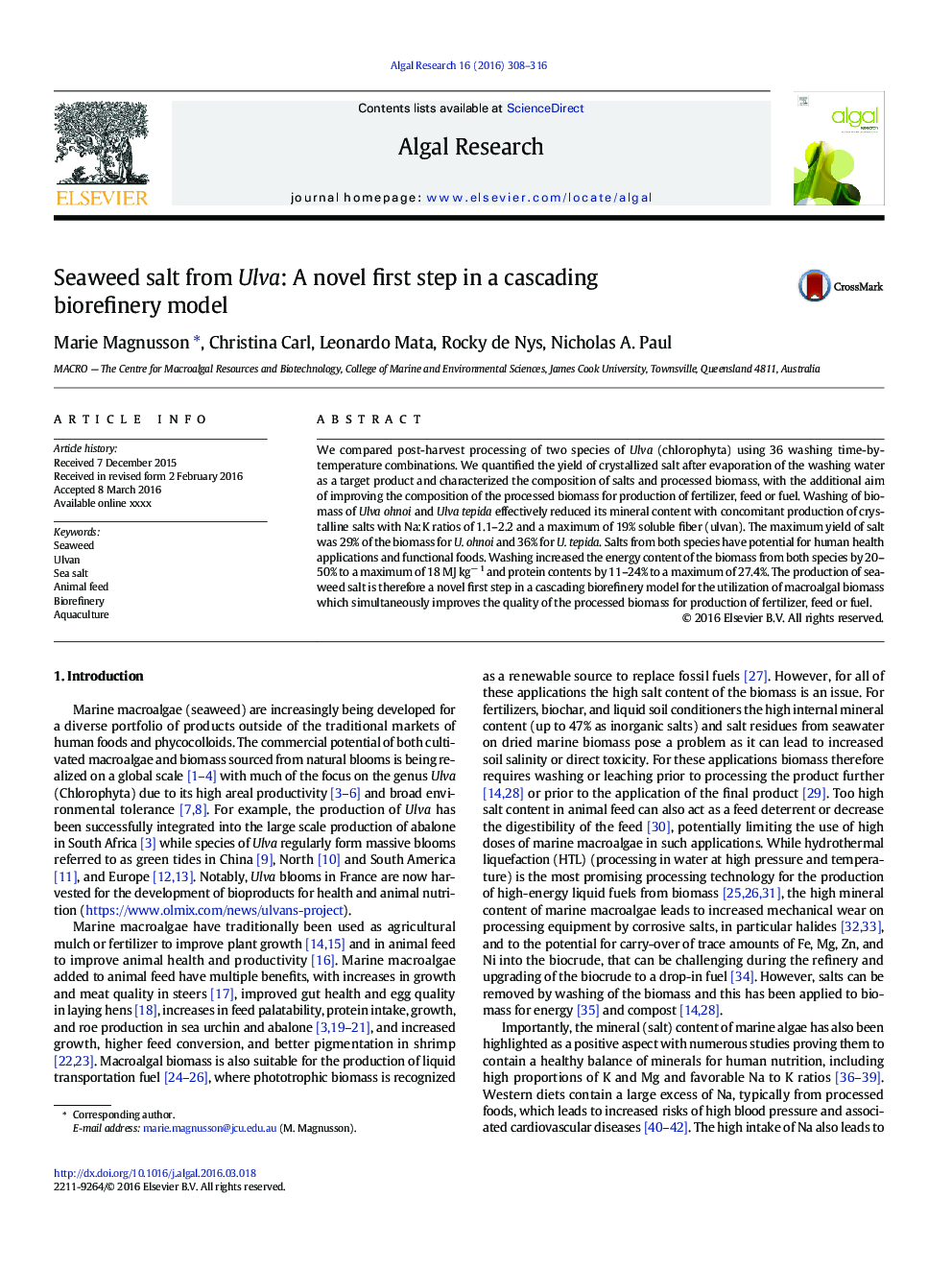| Article ID | Journal | Published Year | Pages | File Type |
|---|---|---|---|---|
| 8087139 | Algal Research | 2016 | 9 Pages |
Abstract
We compared post-harvest processing of two species of Ulva (chlorophyta) using 36 washing time-by-temperature combinations. We quantified the yield of crystallized salt after evaporation of the washing water as a target product and characterized the composition of salts and processed biomass, with the additional aim of improving the composition of the processed biomass for production of fertilizer, feed or fuel. Washing of biomass of Ulva ohnoi and Ulva tepida effectively reduced its mineral content with concomitant production of crystalline salts with Na:K ratios of 1.1-2.2 and a maximum of 19% soluble fiber (ulvan). The maximum yield of salt was 29% of the biomass for U. ohnoi and 36% for U. tepida. Salts from both species have potential for human health applications and functional foods. Washing increased the energy content of the biomass from both species by 20-50% to a maximum of 18 MJ kgâ 1 and protein contents by 11-24% to a maximum of 27.4%. The production of seaweed salt is therefore a novel first step in a cascading biorefinery model for the utilization of macroalgal biomass which simultaneously improves the quality of the processed biomass for production of fertilizer, feed or fuel.
Related Topics
Physical Sciences and Engineering
Energy
Renewable Energy, Sustainability and the Environment
Authors
Marie Magnusson, Christina Carl, Leonardo Mata, Rocky de Nys, Nicholas A. Paul,
